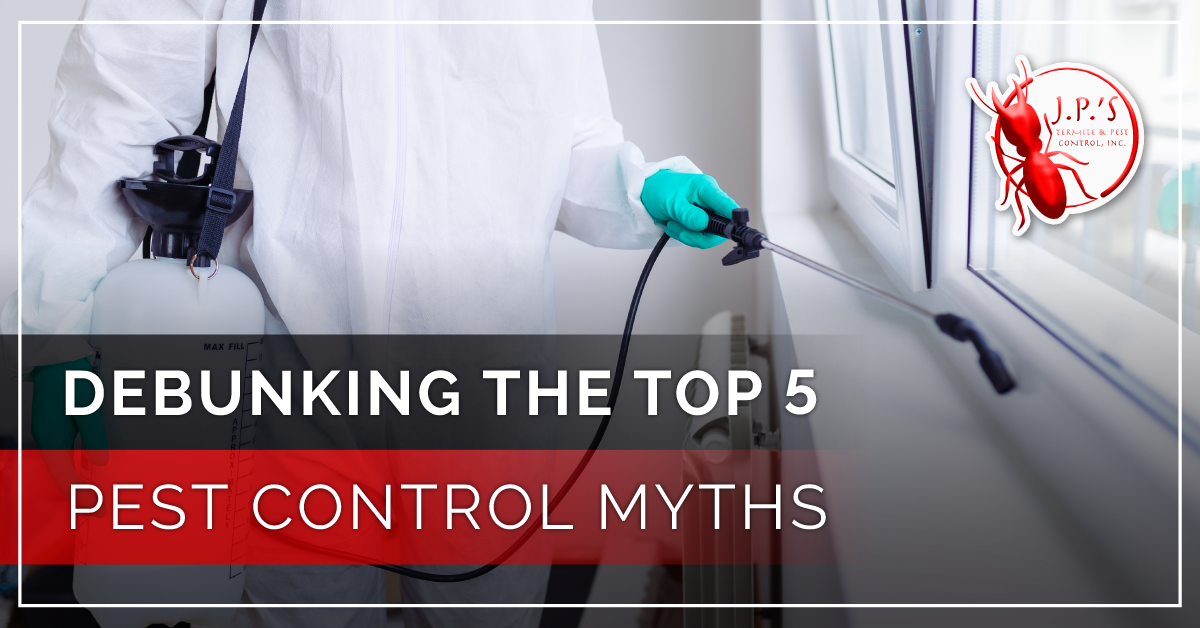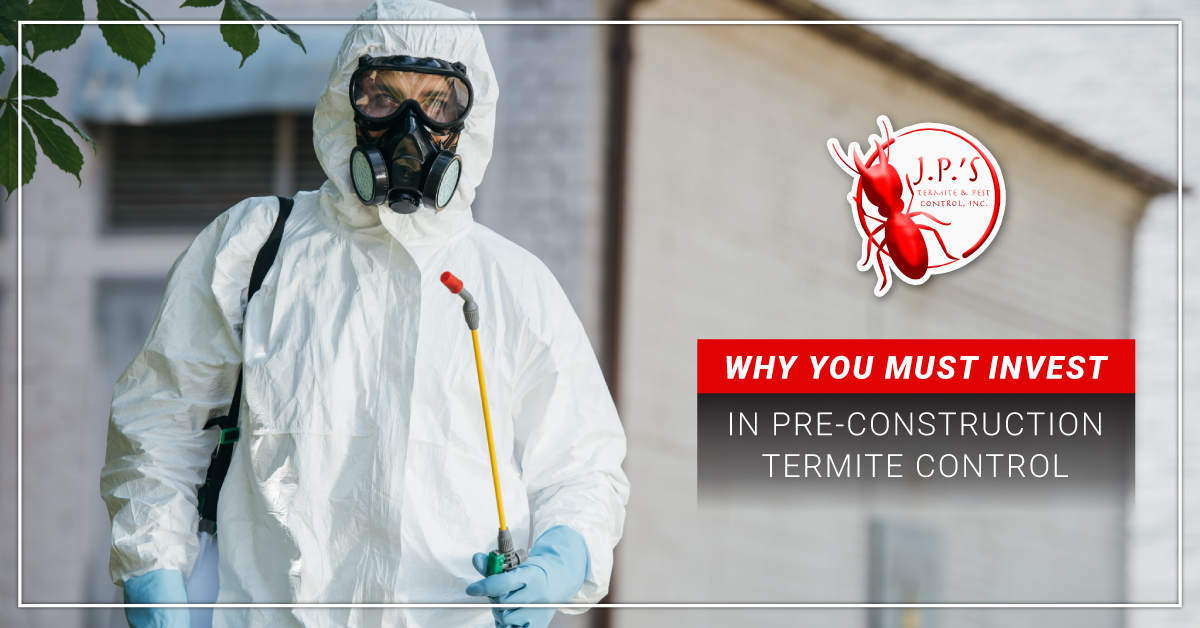|
Myths are part of our integral society, originating from our childhood tales, cartoons, and other forms of media. Most of the times, myths are exaggerated or even fabricated lies.
When dealing with pests, it is essential to learn how to effectively control the situation by understanding what is true from what is false; failure of which will only leave you in a stickier situation.Here, we debunk five of the most widespread pest control myths to help you understand fact from fiction. Myth#1: Pests Mean That Your House is Unclean While pests are generally attracted to dirty surroundings where they can scavenge food, their presence isn't restricted to dirty places. They can be found in clean homes for a stable food source. Once a pest or rodent has determined that they can find food within your dwelling, be sure that they'll find a way to infiltrate your home. They can make your pantry into a nesting ground or breed near your kitchen for easy food access. Bed bugs are a great example of a pest that debunks this myth. Whether your home meets sanitary measures or not, if you contract a bed bug via your clothing, shoes, or bag, you will most likely introduce a pest infection within your home. Myth #2: Cheese in Mice Traps Works Effectively Well The idea that rodents such as mice and rats are attracted to cheese and dairy foods is an imaginary illusion created by cartoons we grew up watching. Majority of times when a cheese trap results in success is if the rodent has been forced to act desperate or let curiosity get the better of it. Instead, you may have a much higher rate of success if you use fruit slices, honey, peanut butter, and sugary treats to tantalize their taste buds. On the other hand, meats such as bacon, sausage, or chunks have the same effect on rats. Therefore, when opting to trap a rodent, ensure to use these foods as they work well as bait and draws them out better than cheese. Myth #3: Rodents That Consume Poison Will Eventually Find Their Way Outside and Die Setting up a bait trap in your home can work against you, especially if laced with poison. Once a rat is drugged, it will take time for it to die; common rat poison can take up to 4 to 10 days to kill a rat. During this time, as the poison gets in effect, the rat will continue to rummage through your household until finally succumbing to it. It will often die within warm spots in your home or near its nesting ground, such as the attic, behind kitchen appliances, or in burrows within the wall. By the time you come to realize its dead, you will be welcomed with a foul odor emanating from its decaying carcass. Myth #4: Bug Zappers Diminish Mosquito Numbers While bug zappers are effective in leading flies and other bugs to their demise, mosquitoes, on the other hand, are not as susceptible to its effects. This is because bug zappers utilize ultraviolet light to attract bugs before being zapped. Mosquitoes are attracted to heat signatures and carbon dioxide emitted by living organisms. Therefore, in drawing and killing mosquitoes with a bug zapper, the ultraviolet light would prove useless. Furthermore, your common zapper may not have the juice to kill any bug which flies into the device. Instead, it may only draw in more insects, causing more harm than good. If you're seeking an effective way to control your local mosquito population, contact J.P.'s Termite & Pest Control, Inc. for adequate pest relief. Myth #5: Not Sighting Any Pest Means You Don't Have Them While most problematic pests can be easily spotted on the surface, bugs such as termites, silverfish, and roaches work in hidden spaces. These pests prefer burrowing into holes and walls while keeping a low profile as they breed. Furthermore, pests such as bed bugs are nocturnal and only come out to feed when you're probably asleep. Therefore, just because you don't spot any pest around doesn't mean that you don't have a pest problem. If you were to scan through every nook and cranny, there's a high probability that you will spot some common pests, such as carpenter ants or roaches lingering around. Thus, to prevent a pest infestation, seek the services of J.P.'s Termite & Pest Control, Inc. for professional assistance. ConclusionOne of the biggest challenges of dealing with bugs and rodents is adhering to the myths associated with pest control. If you find yourself with a pest problem, contact J.P.'s Termite & Pest Control, Inc. for all your fumigation needs. Building a new home is one of the most significant investments you will ever make, and you would never want to have it ruined by termites. Termite damage can go unseen until extensive damage results in costly repairs. However, homeowners need to consider pre-construction termite control in Polk County to deter termites.
Why is Pre-construction Termite Control Important? Subterranean termites are one of the most common termite species that live within the soil, feeding on dead wood and decaying components. These silent invaders munch the wood for your construction unnoticed until it's too late. This may cause the termite infestation to grow past the destruction capacity of your building. Since these termites can already be in the ground where you plan to build your house, it is essential to treat the soil before initiating the construction process. The treatment option enables you to have a long-term protection plan for your home, which will help you to cut repair and maintenance costs in the future. The Treatment Process The treatment process depends on your environment, budget, and the techniques of the company you hired. It works in two phases – the horizontal soil treatment and the post-construction perimeter treatment. You should ensure your contractor does both. Here are some of the steps that may take place during the termite control process: The first step is to treat the foundation as it is the common habitation of the termites and the easiest entranceway during an invasion. A reputable pest control company such as our team at J.P.'s Termite & Pest Control Inc., will come in and spray termiticides on the wood and the foundation trench. The second step is to treat the soil around the foundation and the entire space nearby the floor plan. The chemicals used will kill the termites to restrict them from penetrating your home from beneath. Experts will then use liquid termiticides to treat the plinth walls. This limits the termites from climbing through the structure. Finally, the pest control personnel treats the soil surrounding every tube, which mites might use as an entryway. Additionally, there are other steps a pest control company can apply depending on your budget and needs. Ensure to work with a professional who will offer timely and strategic placement to protect you and your family from the risks of getting in contact with the chemicals. Pre-construction Termite Treatment Cost The type of treatment to be used is the key factor to consider when determining the cost of termite treatment. For chemical treatments, most pest control companies charge per square foot or meter. The soil type is also a significant factor as some places may have compact soils, which may require more chemicals for better prevention. Another factor is the size of your home. Bigger homes will always have a higher pre-construction termite treatment cost. At J.P.'s Termite & Pest Control Inc., we offer a free inspection. Contact us today, and we will be ready to guide and assist you. How Long Does the Treatment Last? If done appropriately, the pre-construction termite treatment can last up to five years. However, it is vital to conduct regular preventive measures to ensure no pests and mites have passed the barriers. Always keep your home clean of any potential food source and habitats of the termites, and work with a professional to offer the inspection and maintenance services you need. Advantages of Pre-construction Termite Control Pre-construction termite treatment is cost-efficient as it helps you avoid costly infestation treatment in the future. The process of treating your area before construction is efficient and time-conscious compared to controlling pests already eating up your wood. It will be easier for the professional to apply the treatment as there will be no hindrances from construction during the process. Once the construction is over, the chances of having termite infestation in the future are minimal. Conclusion Prevention is better than cure. Investing in pre-construction pest control is one of the best decisions you will ever make to protect your home from future damage. Our experts at J.P.'s Termite & Pest Control Inc. have the right know-how to protect your home from termite damage if you are thinking about pre-construction termite control in Polk County. Contact us today! We will help you solve any pest problem. |
Jason ParkerIn 1999, I decided to start my own pest control business so I could have more flexibility in order to be involved in my sons' sporting activities (and to be able to fish when I wanted to). Twenty years later, I'm proud to have my sons working with me helping grow the company! Archives
January 2021
Categories |
|
WHY CHOOSE US
OUR SERVICESREQUEST FREE INSPECTIONSUBMIT A TESTIMONIAL |
LEARN MORE
PEST LIBRARYREAD OUR BLOG |
|



 RSS Feed
RSS Feed

